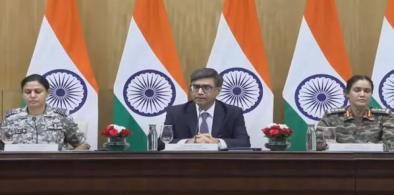Giving poor easier access to welfare benefits: Need to develop citizen experience-focused policies
Across India, accessing the correct eligibility documents is many times harder for the poor than an average privileged caste and a class person. If we add complex digital interfaces for application to paperwork ordeal, then the experiences of the poor worsened. This burdensome citizen experience either dampens the confidence of citizens in welfare policy or reduces the net benefit access due to the cost borne by the citizen.

Have you ever heard Indian citizens disparagingly narrating their experience of getting a driving license, Aadhar card, or any other key document required to survive peacefully in the country? If no, then, every second person you meet tomorrow, ask them about their experience of getting any one of the critical eligibility documents made. You will hear about frustration, waiting, extortion, unnecessary travel, opportunity, and financial cost, etc.
Imagine someone with no landholding, caste network privilege, with barely enough cash for physical survival, thrown in the midst of proving their eligibility for subsidized ration, scholarships, maternity benefits, etc. The burden of proof of proving their eligibility makes them run around offices, touts, cyber cafes, CSCs, Panchayat/Nagar Nigam offices, and so on. The time and money spent by India’s poor either overshoots or constitute a decent percentage of the promised public welfare benefits.
In my job, I meet people from disadvantaged backgrounds troubled by administrative delays pinching their time and pocket. One such person is Naangi Devi. She is a construction worker in her late 50s and stays in Delhi’s Okhla Industrial Area with her two children, who are both eligible for scholarships under Building and Other Construction Workers Act, 1996 (BOCW Act). The only hurdle stopping her children’s access to scholarships is the pending renewal of her labour certificate. She has visited the district labour office five times over the last three months with no success. As it stands, this month, she crossed the age of 60 and is therefore not eligible for renewal of her labour certificate anymore. She might get her labour certificate later if she files an appeal for her pension. However, the ordeal of visits to the district office, bearing the cost of transportation, getting eligibility documents made, and the added anxiety of this process will never be compensated.
The experience of gathering volumes of paperwork to satisfy scheme eligibility, and prove residence and income in a state is common for the poor in India. This disproportionate onus of proving eligibility through paperwork, and applying through complex digital interfaces to ensure government administrators release benefits is an immeasurable administrative burden on citizens.
Administrative burden
Pamela Herd and Donal Moynihan, academics at Georgetown University, US termed the ordeal caused by complex paperwork, unclear norms of qualification, opaque process and non-cooperative frontline bureaucracy as an Administrative Burden.[1] Journalist Annie Lowrey terms this ordeal as a time tax imposed by the government on citizens.
As a response to the growing concerns about excessive cost and time spent by citizens in accessing even the basic Supplemental Nutrition Assistance Program (SNAP) benefits, the Biden Administration has adopted the ‘administrative burden’ framework to address citizen experience pain points through an Executive Order.[2] This order constitutes a council to deploy a life experience framework as a strategy to improve federal service delivery to enhance citizen experience of application, documentation and benefits access. The life experience framework draws from Human-Centred Design (HCD) based methodology.
Documentary Proofs
The belief and narrative driving the codification of complex paperwork and rules in administration are aimed at reducing the chances of fraud or ineligible citizens accessing the benefits. Just like in the US, this narrative is rampant in administrative departments across India. This narrative rings louder in India, as it gains traction from excuses of lesser budget spending on welfare schemes.
The belief that a complex application process ensures better channelling of welfare funds is debunked by the stories of people such as Naangi Devi. Across India, accessing the correct eligibility documents is many times harder for the poor than an average privileged caste and a class person. If we add complex digital interfaces for application to paperwork ordeal, then the experiences of the poor worsened. This burdensome citizen experience either dampens the confidence of citizens in welfare policy or reduces the net benefit access due to the cost borne by the citizen.
Non-profits working on rights-based issues spend most of their time ensuring that the communities they are working with easily access the documentation required for benefits. In addition, they provide application support to offset travel and service costs charged by Citizen service Centres (CSC)/Choice Centres/Suvidha Kendra. The presence of institutions like CSCs and Citizen Centric Governance (CCG) being part of the Good governance index is an acknowledgment by the government of the requirement of mediation support for citizens to access their welfare benefits.
In some cases, local MLAs play critical roles in mediation. However, in spite of governmental and non-governmental interventions in providing mediation services to enable poor people to access benefits, we don’t come across a comprehensive framework for measuring the administrative burden on citizens in India. GOIs CCG does make a valiant attempt, however, there is scope for more granularity in it for measuring burden and devising solutions to reduce the pain point of citizens.
Citizen experience-focused governance
The first step towards addressing the burden on citizens is to think about policy and its implementation design by keeping citizens’ experience at the centre. The citizen experience can be eased by centering governance intervention in three buckets. Firstly, ease access to key eligibility documents such as income and caste certificates and residence proofs (especially for migrants). Secondly, on the technology front, the focus must be on the user experience of dealing with digital interfaces and portals. This involves streamlining UI designs, training frontline officials, and integrating databases of different social security programs (experimented in Odisha’s KALIA program) to ensure minimal citizen travel to the frontline or mediation offices. In addition, the government should make itself accountable for wait time, costs and procedural delays affecting citizens. Thirdly, the state must begin a renewed focus on easing welfare access rules, quality of awareness programs, and a seamless grievance redressal process to communicate rules and processes of access.
These interventions are not rocket science. At various levels, many academics, politicians, and bureaucrats might have thought about it. At the global level, both private corporations and governments have built a renewed focus on the citizen/customer experience of engagement. In fact, major private corporations champion the cause of customer experience systematically.
However, in India, major interventions such as CSCs and other mediation institutions have seen middling success due to the absence of citizen experience-based metrics to assess accountability. Hence, it becomes imperative for civil society, non-profits, and public officials to introduce citizen experience-based systemic measures in advocacy campaigns for improved public welfare access to vulnerable citizens.
(The author is the North Zone lead for Indus Action and works on problem-solving systems issues across different state governments in improving their social security net welfare delivery rates. Views are personal. He can be contacted at hitesh@indusaction.org. Twitter: https://twitter.com/IndusAction and LinkedIn )




















Post a Comment